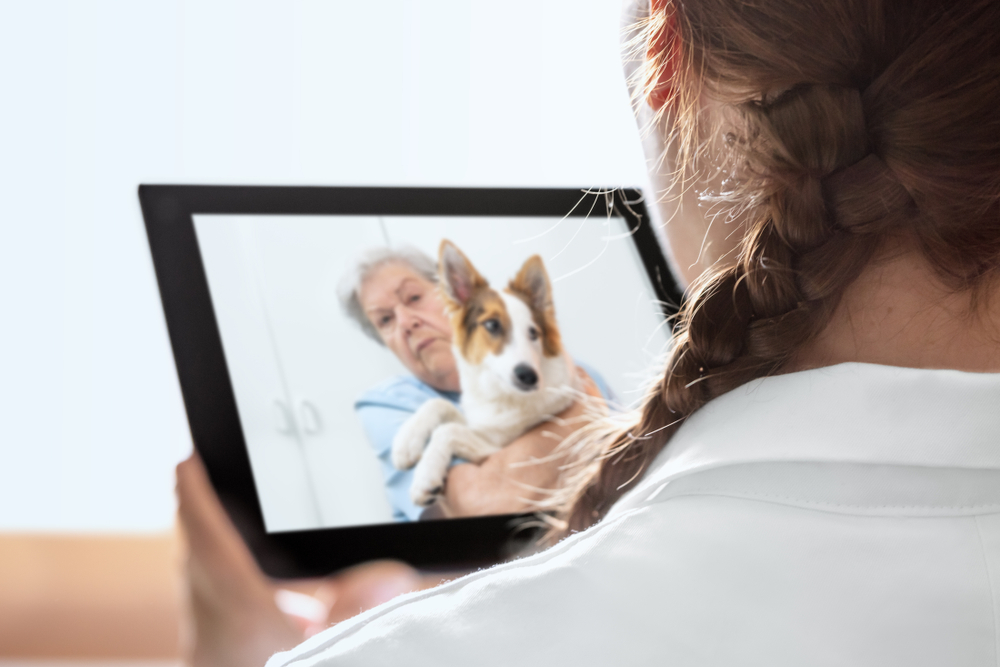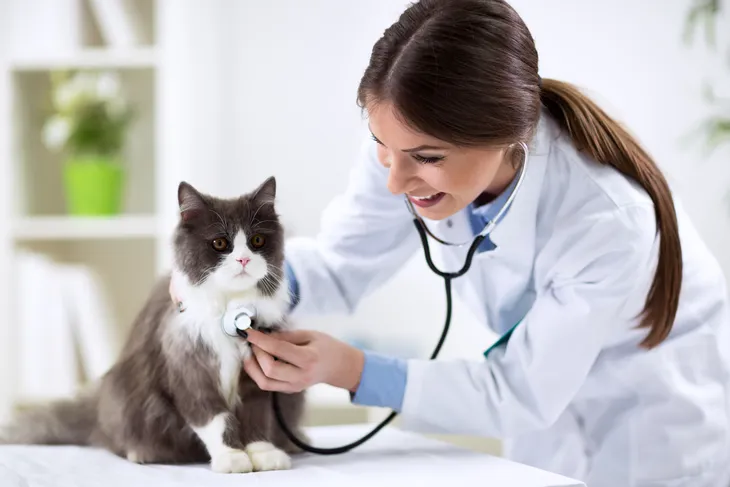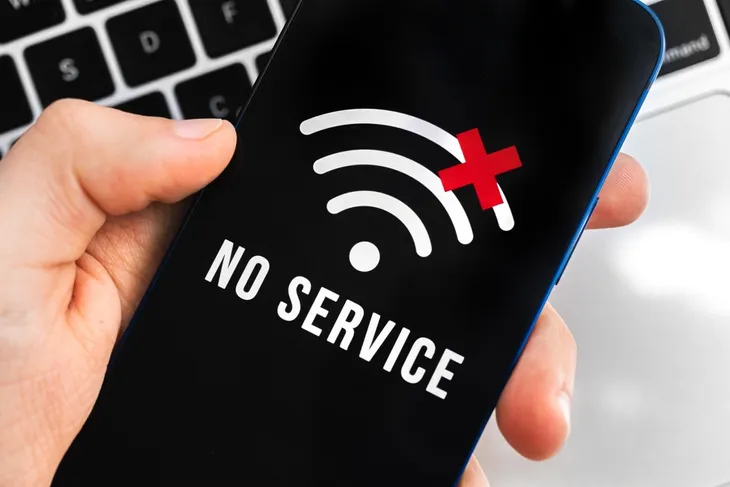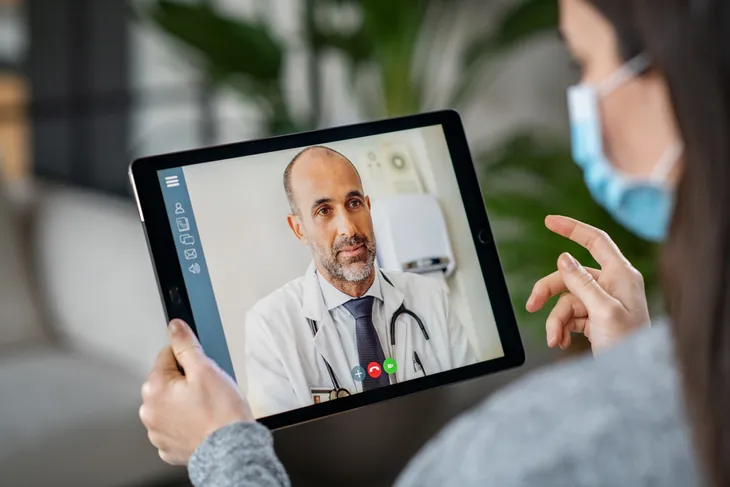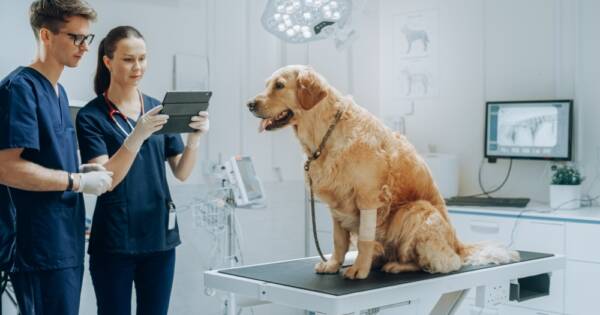- Telehealth is a broad term that refers to health-related services that are provided virtually.
- Telehealth can be delivered through a variety of methods, such as over the telephone, video calls, text messaging, and even internet chat.
- While vet telehealth is a great option to supplement care, it can’t (and shouldn’t) replace in-person veterinary care entirely.
No one wants their pet to get sick but it does happen. Luckily, we have veterinary care that puts the health of our pets first. Another service that has been gaining traction in recent years is vet telehealth. This modern option allows you to receive medical advice, check-ups, and other services for your pet virtually.
Not only is vet telehealth sometimes a cheaper option, but it can also be convenient for you and your pet. There are many other benefits worth noting and a lot more to know about it. Here’s a comprehensive look at what vet telehealth is, how it works, the benefits, the disadvantages, and how to use it!
What Is Vet Telehealth?
Simply put, vet telehealth is a broad term that refers to health-related services (including health information and education) that are provided virtually. Meaning the patient and vet are in different locations. Telehealth can be delivered through a variety of methods, such as over the telephone, video calls, text messaging, and even internet chat.
VCA Animal Hospitals explains that telehealth doesn’t just refer to telemedicine, which is diagnosing and treating conditions remotely. The source explains that telemedicine is just one category under the umbrella of telehealth. Other services offered include teletriage and health education.
Vet Telehealth vs. Telemedicine: What’s the Difference?
As mentioned, vet telehealth is a broad term for remote healthcare services for pets. It can include both remote clinical services like checkups as well as non-clinical services like education.
Telemedicine, on the other hand, refers to the practice of medicine remotely. VCA Animal Hospitals explains it essentially means a veterinarian can diagnose a condition, recommend a treatment, or provide a prescription without seeing their patient in person.
What Is Teletriage?
Teletriage is another term you may come across when learning about vet telehealth. First, you need to understand what triage means. VCA Animal Hospitals explains that triage refers to “the act of performing an initial assessment to determine the urgency of an illness or injury.” So, teletriage is simply the act of performing triage remotely. It’s typically done over the phone or the internet.
Teletriage is a great option when your pet develops an illness or injury when your veterinary clinic is closed. By receiving triage remotely, a professional can help you determine whether you can wait until your clinic is open or if it’s an immediate emergency and requires attention at an after-hours clinic. They may also be able to refer you to a telemedicine provider who can provide a remote check-up.
How Does Veterinary Telemedicine Work?
Now that you have a better understanding of telehealth, teletriage, and telemedicine, you might be wondering how telemedicine works exactly. Veterinary telemedicine is offered in the same way as human telemedicine in that it starts by requesting a virtual appointment. The vet will schedule the virtual appointment, which is often available in a variety of ways such as via phone calls, text messaging, online chats, email, and videoconferencing.
During the visit, the vet can evaluate your pet in hopes to provide a diagnosis. If a diagnosis is confirmed, the vet can also provide recommendations for treatment virtually. They can even prescribe medication if necessary.
Can Vet Telehealth Replace In-Person Appointments?
The American Veterinary Medical Association (AVMA) emphasizes that veterinarians should only use telemedicine “within an existing Veterinarian-Client-Patient Relationship (VCPR), with the exception for advice given in an emergency until that patient can be seen by a veterinarian.” This means telemedicine should only be provided if the vet has conducted a physical examination in person previously.
So, the short answer is no, telehealth can’t entirely replace in-person appointments. In-person appointments are still essential. In fact, most states and the AVMA’s Principles of Veterinary Medical Ethics require an initial in-person appointment and the source also says the federal law requires VCPR to prescribe extra-label medications for animals.
Additionally, in-person visits can catch subtle abnormalities that can’t be detected virtually. While telehealth is a great option to supplement care, it can’t (and shouldn’t) replace in-person veterinary care entirely.
The Benefits of Virtual Healthcare for Pets and Pet Parents
Virtual healthcare can be beneficial for both you and your pet. For starters, it’s a great option when you can’t physically bring your pet into the clinic, such as no access to transportation. VCA Animal Hospitals also points out that it’s a great option for people who live in remote communities where clinics are far away.
Some pets experience extreme anxiety when visiting the vet too, so virtual appointments can help reduce their anxiousness. Virtual appointments can be convenient for pet parents too because they take up less time in your day since there is no commute to a clinic. Finally, sometimes virtual appointments can even be cheaper than in-person care.
The Cons of Virtual Healthcare for Pets and Pet Parents
Though vet telehealth can be incredibly beneficial, there are some drawbacks and limitations. For starters, some illnesses can be challenging to diagnose virtually. In some cases, in-person physical examinations are necessary.
Furthermore, technology isn’t foolproof. Sometimes wireless connections are lost or poor, which can result in low-resolution imaging. This can make it difficult to provide proper care if the vet needs to clearly see your pet to evaluate its symptoms.
When Is Telemedicine Not Appropriate?
While telemedicine can certainly be convenient and affordable, sometimes it’s not appropriate, especially during immediate emergencies. If your pet suffers a serious injury (such as being hit by a car) or becomes seriously ill then you shouldn’t wait for a virtual appointment. Take your pet to an after-hours clinic right away if your local clinic is closed.
Additionally, sometimes vets will recommend in-person care during a virtual appointment if they aren’t able to collect enough information to make an accurate diagnosis or if further diagnostic testing is needed. VCA Animal Hospitals explains that your vet may be able to provide “symptomatic relief to a pet that is experiencing pain,” however, additional blood work, ultrasounds, or other testing may be necessary to get to the root cause. This can only be done in person.
When Is Telemedicine Appropriate?
There are many circumstances when telemedicine can be used. For example, VCA Animal Hospitals says chronic recurrent issues, such as behavior problems or allergies can be addressed through telemedicine. The source also notes that minor concerns like sudden mild limping or mild diarrhea can also be addressed through telemedicine.
It can also be used for post-surgical care, after-hours care, monitoring, annual wellness check-ups (that don’t require immunizations), general wellness advice, hospice care, or for prescription refills. Essentially if the concern is minor and not an emergency you can book a virtual appointment. In the worst-case scenario, the vet will recommend in-person care.
Is Vet Telemedicine Covered by Pet Insurance?
Pet insurance is a great option to help offset the costs of veterinary care. So, you might be wondering if vet telemedicine is covered by pet insurance. The short answer is, yes, many pet insurance companies cover the costs of vet telemedicine.
According to the Pawlicy Advisor, leading insurance brands like ASPCA, Petplan, PetsBest, Pet First, and Hartville cover accidents and illness claims through telemedicine. That said, it’s always a good idea to check your policy first. If it’s not obvious, call your insurance company to confirm if telehealth expenses are covered. It’s also worth noting that most companies require an in-person appointment first for new customers to “establish baseline health.”
What to Expect at Your First Appointment
So, what can you expect at your first virtual appointment? VCA Animal Hospitals says to expect part of your appointment to be conducted by a registered veterinary technician (RVT), just like an in-clinic appointment. The technician usually collects your information, the reason for the appointment, and your pet’s medical history. Then a licensed veterinarian will complete your appointment.
Providing as much detail of your pet’s medical history is important so be prepared to answer a variety of questions. The source says after gathering their medical history and reason for the appointment, the vet will conduct an “abbreviated physical exam.” If you’re video conferencing be prepared to show the area of concern on video or if you’re chatting via text or online chat, you may be asked to provide videos and photos. The source also notes that you may be asked to check your pet’s heart rate, gum color, and respiratory rate. But the vet will walk you through how to check these.
Based on the information gathered at the appointment, the vet will do their best to make a diagnosis and recommend a treatment plan. If necessary, medication can also be prescribed virtually. If they’re not able to gather sufficient information then you may be told to see a vet in person.
How to Prepare for Your Appointment
Being prepared ahead of your appointment is important and can help make the appointment go smoothly and quickly. As such, be sure to gather your pet’s medical history as well as a record of your current concern. VCA Animal Hospitals also suggest looking at a calendar and writing down a timeline of when the problem first started and what has happened since. You should also be prepared to answer many questions during the consultation, such as:
- What is your concern today?
- When did you first notice the problem?
- Has it worsened, improved, or stayed the same?
- Is your pet eating and drinking and acting normally?
- Are they vomiting or experiencing diarrhea?
- Do they have a cough?
- Is your pet up to date on vaccines?
- Has your pet been around other animals recently?
You can also prepare for your appointment by taking videos and/or pictures of the problem area. Sometimes, your pet may seem fine during your appointment so having videos or pictures can help your vet assess the problem. The source also notes that sometimes vets will require their medical history, pictures, and videos ahead of the appointment so they have time to review them before the appointment. You can also ask the vet what you need ahead of your appointment to ensure you’re prepared.
Veterinary Telemedicine Services to Consider
There are tons of telemedicine services available so it’s important to weigh the pros and cons of each. According to Wired, TeleVet is a great option if your local vet is in-network. This app allows you to simply create a profile for yourself and your pet and then you connect with the veterinarian you already have. You can also ask your veterinarian if they offer virtual appointments. Other great services to consider include:
- Pawp
- Chewy
- Airvet
- PetDesk
- AskVet
There are many others out there too. It’s important to do your research to find out which service is best for you and your pet.
